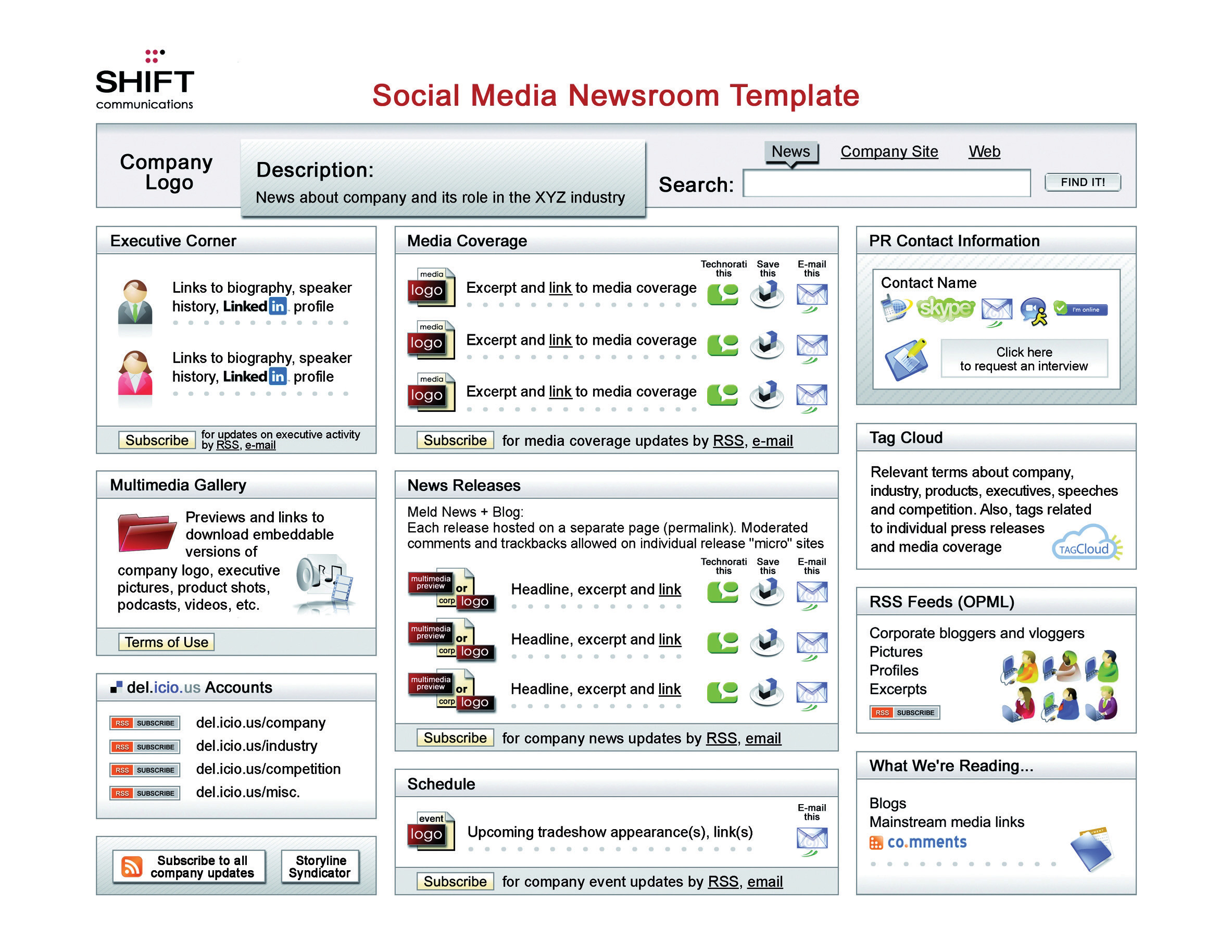As the Internet increases the ease of access to information, an essential part of WebPR (Web public relations) is ensuring that pertinent information is easy to access. Making sure that journalists, customers, and investors are able to find all key company information quickly and easily means that you are able to slip into that conversation as a key contributor that much more easily.
A 2003 Nielsen Norman study found that when journalists used a corporate Web site to find basic information, they were successful only 73 percent of the time.Jakob Nielsen, “PR on Web Sites: Increasing Usability,” Jakob Nielsen’s Alertbox, March 10, 2003, http://www.useit.com/alertbox/pr-2nd-study.html (accessed May 28, 2008). Journalists often work on tight deadlines, and having the required information on hand could make the difference between whether a company is written about or not. An online press roomA part of a Web site aimed at providing journalists with pertinent corporate information, such as PR contacts, images, and press releases. can ensure a company is able to meet journalists’ needs.
An online press room must have the following:
Figure 12.2 Social Media Newsroom Template

Keeping the information accessible and accurate saves time for both the PR team and for the researcher and shows an openness to communication.
Although many journalists are bloggers, bloggers are not all journalists. They do not have to answer to their editor or publisher. They generally do not write to pay their bills; they tend to write about things that they are passionate about. They measure success in number of comments, trackbacksA mechanism used in a blog that shows a list of entries in other blogs that refer to a post on the first blog., and traffic.
To pitch effectively to bloggers, you need to understand these subtleties. There are many useful blog posts by bloggers who get pitched too often that offer guidelines for the PR industry. The effective PR hack will take note.
As with journalists, building a relationship is the best way to pitch to a blogger. Remember, journalist or blogger, you are reaching out to an individual. To build a relationship, try the following:
In the United States, the beauty PR industry has been noticing the power of bloggers, and some of the cosmetics houses send samples and swag (an industry term for gifts) to bloggers as well as journalists.Kayleen Schaefer, “Beauty Blogs Come of Age: Swag, Please!” New York Times, January 31, 2008, http://www.nytimes.com/2008/01/31/fashion/31SKIN.html?ei=5088&en= 9e67baddbc42c4a5&ex=1359435600&partner=rssnyt&emc=rss&pagewanted=all (accessed May 28, 2008). There is a difference, however. Journalists are generally restricted in the value of the gift they are allowed to accept and tend to reveal when reviewed products are free samples. The publishing houses need to maintain an unbiased reputation. Bloggers, however, are self-publishers and can make up their own rules as they go along. Some of them accept lavish gifts in return for coverage—coverage that can appear more authentic (even if it isn’t) as it comes from a blogger and not a journalist.
WebPR is about engaging in a conversation, so the essential tools that are required are the following:
RSS feeds tracking mentions of pertinent keywords are the best way to get an overview of mentions of a brand or company. These are outlined in detail in Chapter 11 "Online Reputation Management".
Responding can take place through the various social media channels such as blogs, Twitter, and forums.
Online article directories and press-release directories are also crucial to publishing and spreading information. Having a thorough and up-to-date online newsroom ensures that relevant information is available.
The most important tool is relationship building. Whether with journalists, bloggers, or consumers, transparent conversations pave the way for effective public relations.
There is no question about it: the media landscape has changed, and those who need to broadcast messages in the new media need to adapt along with it.
The Internet allows for greater distribution and reach of all messages, but that means that companies can no longer control these messages in the ways that they used to. Public relations on the Web allows companies increased access to what their customers are saying and a direct channel to respond to that.
Having so many new recipients of information requires more work from the PR team. As well as building relationships with journalists, you also need to include bloggers and other generators of content. The rules of engagement are changing, and power is increasingly moving from the companies who create messages to those that they need to broadcast it for them.